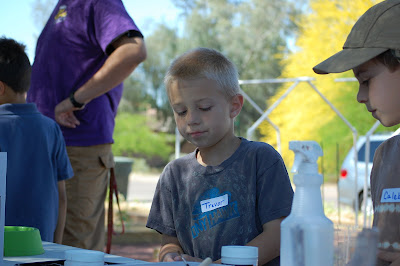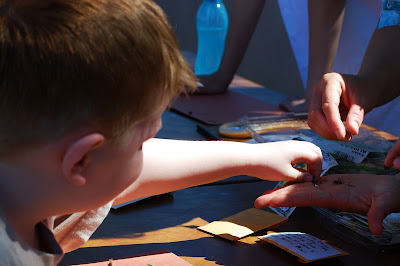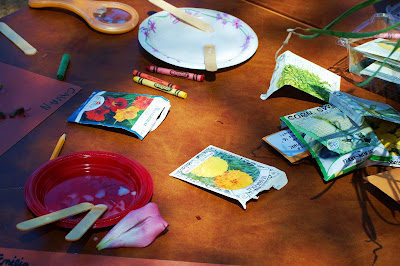Saturday, April 30, 2011
Monday, April 25, 2011
Pest Control
- For the short term when you see pests, use a couple of options:
Garlic and Pepper spray sprayed a maximum of once a day.
Recipe: 1 clove garlic and 1 hot pepper minced finely. Place in spray bottle and fill with water. Let set 30 minutes. Repels aphids and whiteflies.
Soap spray
Recipe: a drop of blue dish soap per spray bottle of water. Use on tomatoe plants as well as other plants. Sprat the undersides of the leaves for aphids and white flies.
- For long term fixes for aphids, for example, which love squash plants, broccoli, Brussels sprouts, and cauliflower, consider adding beneficial bugs when you see an outcropping of bugs.
- Lady bugs will eat the bugs which eat our plants. Lady bugs won’t stick around if they don’t have a home or food. Over the long term they will keep plants from getting infestations. Don’t wipe the insects out completely, because we need them ground for the food web to exist.
- Coffee grounds keep slugs and snails at bay, and keep cats away. Coffee grounds also add nitrogen. We have so much organic wood chips in our soil, so we need to add coffee grounds at least once a week, to restore the nitrogen. Mix the grounds carefully in the soil around tender plant roots.
- Ants are a universal pest. Pour cream of wheat around the hill. This causes them to explode after eating it!
- Tomato horned worms, those huge worms, with a horn and green body with black striping. Look at ends of tomato leaves. If they look stripped, your plants may have an infestation. Look on the stems, for they blend in so well with the plants. Look for black droppings, looking like charcoal bits. The best time to look is early morning when they are very active. Rip them off and stomp! Check frequently, for they can strip a plant in two or three days. They also eat pepper and eggplant plants.
Sunday, April 24, 2011
Saturday, April 23, 2011
YMCA children visit the garden
A group of 9 children visited the garden Friday for the first education program. The lesson focused on seeds and planting. Markers were also made and placed around the garden.
Subscribe to:
Posts (Atom)



































































